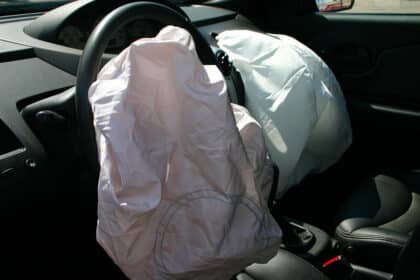Why do gas prices include an extra 9/10 of a cent? The News Wheel gets the inside scoop.
Photo: Mike Mozart via CC
“Did you see how much gas is today?” you might ask your spouse or your roommate as you grab your keys to head out on an errand.
“Oh, I saw it at the BP on the corner for $2.09,” he might reply. But he’s probably wrong. He probably saw it at $2.09 and 9/10 of cent, which actually equates to $2.10 when all is said and done. But why do gas prices actually have that extra 9/10 fraction at the end, and why does nobody really register it or seem to care?
Save on Gas: By using the AC efficiently…here’s how
Research indicates that this practice dates back to the 1930s, when the federal government wanted to get its hands on a fraction of what our ancestors were paying for gasoline. In 1932, the feds implemented a $0.01 gas tax as a temporary measure during the Great Depression, set to expire in 1934. But it didn’t—instead, it was raised by a fraction of a cent.
Understandably, gas stations did not want to eat this cost. But they also didn’t want to raise prices drastically; while raising gas by a cent or two might not sound drastic nowadays, it was a pretty steep hike when gas was only 15 cents, according to Ed Jacobsen, who runs the Northwoods Petroleum Museum, in an interview with Marketplace.
So instead, the price was raised by 9/10 of a cent—and something magical happened. Nobody seemed to notice or care. That magic is simply a matter of marketing.
“They found out that if you priced your gas 1/10 of a cent below a break point, let’s say 40 cents a gallon, ‘.399’ just looked to the public like 39 cents…” remarked Jacobsen.
It’s a common idea in marketing. Our eyes are attracted to the first, more significant numbers and tend to ignore the subsequent digits. For example, an appliance marketed at $99.99 is more appealing to our eyes than $100.00. Logically, we know that they are essentially the same price, but we are much more likely to buy the product that is priced at $99.99, not because we think saving that one cent is life-changing, but because the marketing illusion is that it is a better deal.
This simple bait-and-switch tactic that gas stations use with the 9/10 fraction nearly netted the industry an extra $1.4 million a year in the US back in 2011, according to Reuters.
Need Some New Wheels? Determine if you should buy or lease first
So why do gas prices include that extra 9/10 of a cent? Because they’re making hundreds of millions off of us, and we’re all too blind to notice.
Sources: Reuters, Marketplace, Gizmodo
Timothy Moore takes his leadership inspiration from Michael Scott, his writing inspiration from Mark Twain, and his dancing inspiration from every drunk white guy at a wedding. When Tim is not writing about cars and money, he’s working on his novel or reading someone else’s, geeking out over strategy board games, hiking with his pooch, or channeling his inner Linda Belcher over beers with his friends. See more articles by Timothy.










